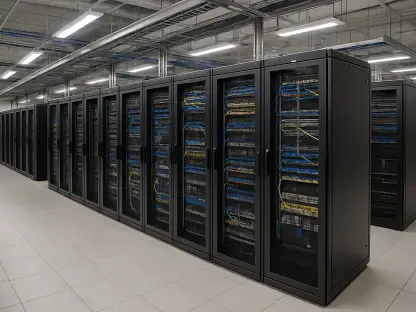I’m thrilled to sit down with Matilda Bailey, a renowned networking specialist whose expertise in cellular, wireless, and next-generation solutions has helped countless individuals and organizations navigate the complexities of modern connectivity. With a deep understanding of how technology shapes our daily lives, Matilda has been at the forefront of advocating for robust home network infrastructure. In this interview, we’ll explore why a home network is as vital as traditional utilities, how it supports our increasingly connected lifestyles, the challenges of managing multiple devices, and practical tips for building a reliable setup. Let’s dive into her insights on creating a seamless digital backbone for every home.
Can you explain why you believe a home network is just as critical as utilities like electricity or plumbing?
Absolutely. I see the home network as the “fourth utility” because it’s become fundamental to how we live. Just like you expect water to flow or lights to turn on, we now expect to be connected. It’s not just about convenience; our work, education, and even safety systems like smart doorbells rely on a stable internet connection. Without it, so much of modern life grinds to a halt. It’s woven into our routines in a way that’s almost invisible—until it stops working.
How has our growing dependence on internet connectivity reshaped the way we think about home infrastructure?
It’s been a massive shift. A decade ago, internet was a nice-to-have, mostly for entertainment or email. Now, it’s the backbone of how we function. Remote work, online schooling, telehealth appointments—these aren’t just trends; they’re necessities for millions. This reliance means we can’t treat Wi-Fi as an afterthought anymore. We need to design homes with connectivity in mind, just as we plan for electrical outlets or water pipes, because a weak network can disrupt everything.
Can you share some real-world examples of how a poor network can mess up everyday activities?
Oh, for sure. Imagine you’re on a critical work call and the video freezes because someone else in the house is streaming a 4K movie. Or a student trying to submit an assignment online, but the connection drops right at the deadline. Even simple things like a smart thermostat failing to adjust because it can’t reach the network can throw off your day. These aren’t just annoyances; they impact productivity, learning, and comfort in very tangible ways.
How does a solid network setup help manage the chaos of multiple devices competing for bandwidth in a typical home?
A well-designed network acts like a traffic cop for all the data flowing through your home. With so many devices—laptops, phones, smart TVs, gaming consoles, even fridges—connected at once, you need a system that can handle the load without choking. A good setup ensures smooth data flow, minimizes lag, and prevents dropped connections. It’s about creating a balance so everyone and everything gets what they need without stepping on each other’s toes.
Beyond just speed, what other factors make a home network truly effective?
Speed is only part of the equation. Coverage is huge—having Wi-Fi that reaches every corner of your home, not just near the router. Reliability is another; you want a network that doesn’t crash when demand spikes. Then there’s security, which is often overlooked. A proper setup protects your devices from threats, whether it’s a hacker trying to access your smart camera or malware spreading through your network. All these elements together create a system you can trust.
For someone new to this, can you walk us through some practical ways to build a strong home network?
Start with the basics. Invest in a good router that can handle multiple users and high traffic—look for something with dual-band or tri-band capabilities. Consider a mesh system if your home is large or has dead zones; it’s a set of nodes that work together to blanket your space with Wi-Fi. Also, think about segmenting your network. Put smart devices like appliances on a separate network so they don’t interfere with critical stuff like work laptops. It’s about creating a setup that’s tailored to your needs and usage patterns.
With smart homes becoming the norm, how does this trend amplify the need for robust network infrastructure?
Smart homes are a game-changer, but they’re also a challenge. When your TV, lights, locks, and even your fridge are online, that’s a lot of devices constantly communicating. Each one adds strain to your network, and if it’s not up to the task, you’ll see slowdowns or failures. Plus, these devices often handle sensitive data—think about a smart lock or camera. A strong network isn’t just about keeping things running; it’s about ensuring they’re secure and responsive, no matter how many gadgets you add.
What’s your forecast for the future of home networking as technology continues to evolve?
I think we’re heading toward even greater integration and automation. As more devices become connected and technologies like 5G and Wi-Fi 6E become mainstream, home networks will need to be smarter and more adaptive. We’ll see systems that automatically optimize themselves based on usage, prioritize critical tasks, and enhance security without user intervention. The goal is to make connectivity truly invisible—just like flipping a light switch, it’ll just work. But to get there, people will need to start prioritizing network infrastructure now, before the demands outpace their setups.









